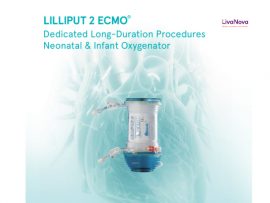Abstract Established clinical monitoring techniques lack predictive capabilities, emphasizing the need for refinement in MO monitoring towards an early warning system. In this study, an MO was modified by integrating..
Lire la suiteAbstract Thrombosis and plasma leakage are two of the most frequent dysfunctions of polypropylene (PP) hollow fiber membrane (PPM) used in extracorporeal membrane oxygenation (ECMO) therapy. In this study, a..
Lire la suiteAbstract This article introduces an open-source tool to experimentally compare blood residence time in biomedical devices using an image-based method. The experimental setup and the postprocessing workflow are comprehensively elucidated..
Lire la suiteAbstract Introduction: The optimal timing for extracorporeal membrane oxygenation (ECMO) circuit change-out is crucial for the successful management of patients with severe cardiopulmonary failure. This comprehensive review examines the various..
Lire la suiteAbstract Extracorporeal membrane oxygenation (ECMO) is a life-support technique used to treat cardiac and pulmonary failure, including severe cases of COVID-19 (coronavirus disease 2019) involving acute respiratory distress syndrome. Blood..
Lire la suiteAbstract Objectives Intra-device thrombosis remains one of the most common complications during extracorporeal membrane oxygenation (ECMO). Despite anticoagulation, approximately 35% of patients develop thrombi in the membrane oxygenator, pump heads,..
Lire la suiteAbstract Thrombosis in extracorporeal membrane oxygenation (ECMO) circuits remains a frequent complication. We characterize the location, extent, structure, and clinical implications of thrombi in 53 ECMO circuits from 46 pediatric patients...
Lire la suiteAbstract Coronavirus disease 2019 (COVID-19) has drastically increased the number of patients requiring extracorporeal life support. We investigate the efficacy and safety of low-dose recombinant tissue-type plasminogen activator (rtPA) injection..
Lire la suiteAbstract Introduction: A high-pressure excursion (HPE) is a sudden increase in oxygenator inlet pressure during cardiopulmonary bypass (CPB). The aims of this study were to identify factors associated with HPE,..
Lire la suiteAbstract Introduction: Extracorporeal membrane oxygenation circuit performance can be compromised by oxygenator thrombosis. Stagnant blood flow in the oxygenator can increase the risk of thrombus formation. To minimize thrombogenic potential,..
Lire la suiteTHE INCIDENCE OF oxygenator thrombosis during cardiopulmonary bypass (CPB) has decreased significantly with the advent of modern heparin-coated bypass circuits, but rare failures continue to be reported at a rate..
Lire la suite






